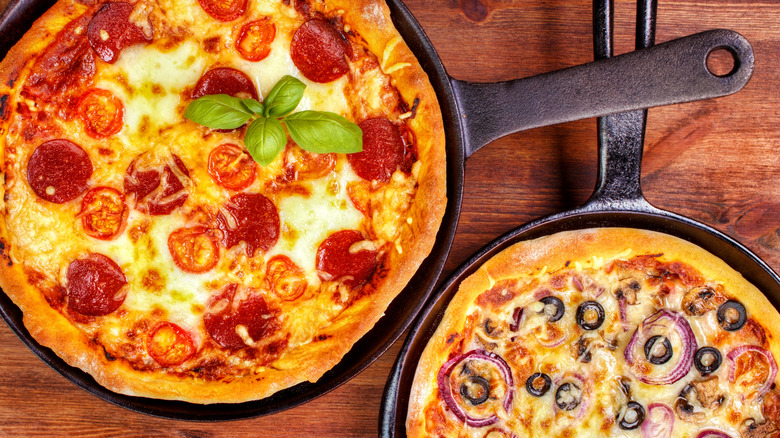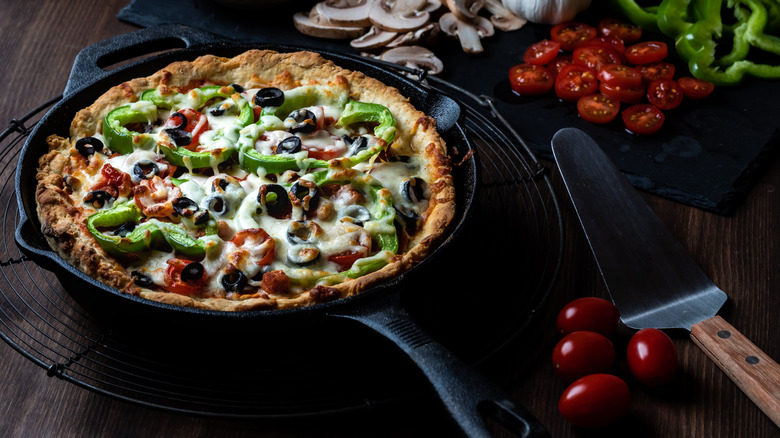How To Achieve The Perfect Crust On Your Stovetop Pizza
Making pizza on the stovetop is a quick and easy way to get a delicious meal without needing to use your oven — and heat up the house in the process. The cooking process takes place entirely on the stovetop, and there are a few necessary steps to ensure your approach gives you the crispy crust you'd expect from a traditional oven-baked pizza. First, turn your stovetop's heat level to high. Next, cook one side of your pizza dough on high heat, then reduce to medium when you flip the crust. This method works with store-bought and homemade pizza dough, and can be done in a cast iron or other type of sturdy skillet.
This approach to getting crispy crust in a skillet is similar to how you'd achieve a similar result in the oven. However, instead of baking the pizza after crisping up one side of the dough, cooking it on medium after flipping the dough simplifies the process and shortens the cook time (plus eliminates the need to preheat the oven). The high heat at the beginning ensures that the bottom of the crust gets a nice, golden-brown crispiness. By flipping the crust and lowering the heat, you can add your toppings and continue cooking the pizza. This process creates a perfect balance, giving you a crunchy exterior and a well-cooked, soft interior. It's a versatile technique that can be applied to any skillet pizza recipe, making it a reliable method for achieving the perfect crust every time.
Turning an oven-baked pizza recipe into a stovetop pizza recipe
You can adapt most skillet pizza recipes for stovetop cooking, making it easy to enjoy a variety of flavors without needing to use your oven. For example, our Veggie Lovers Cast Iron Pizza is a great option for stovetop cooking. Instead of searing the bottom of the crust and then transferring it to the oven, follow these stovetop instructions: Start by preheating your skillet on high heat. Add a small amount of oil to prevent sticking, then place your dough in the skillet. Cook the first side until it's golden and crisp, which should only take about a minute — keep a close eye on it to avoid burning. Carefully flip the crust and lower the heat to medium. Quickly add your sauce, cheese, and toppings, then cover the skillet with a lid. Allow the pizza to cook for an additional four to five minutes, or until the cheese is melted and bubbly.
To help the cheese melt and the toppings cook evenly, make sure to cover the skillet after adding your sauce, cheese, and vegetables. This creates an environment similar to an oven, trapping the heat and moisture. It's an efficient way to make sure everything on top gets cooked properly while the crust remains crispy — the high-to-medium heat approach ensures the crust is perfectly cooked without burning. This technique is quick and adaptable, making it a great option for any skillet pizza recipe you want to try.

